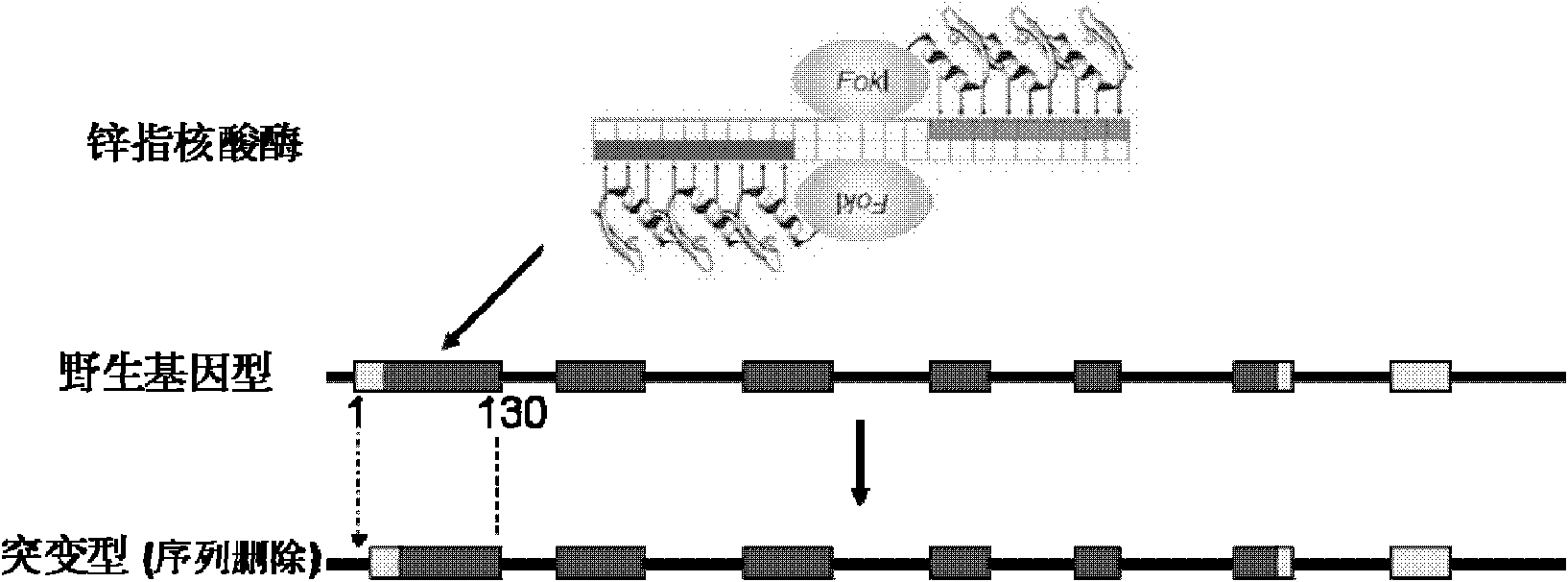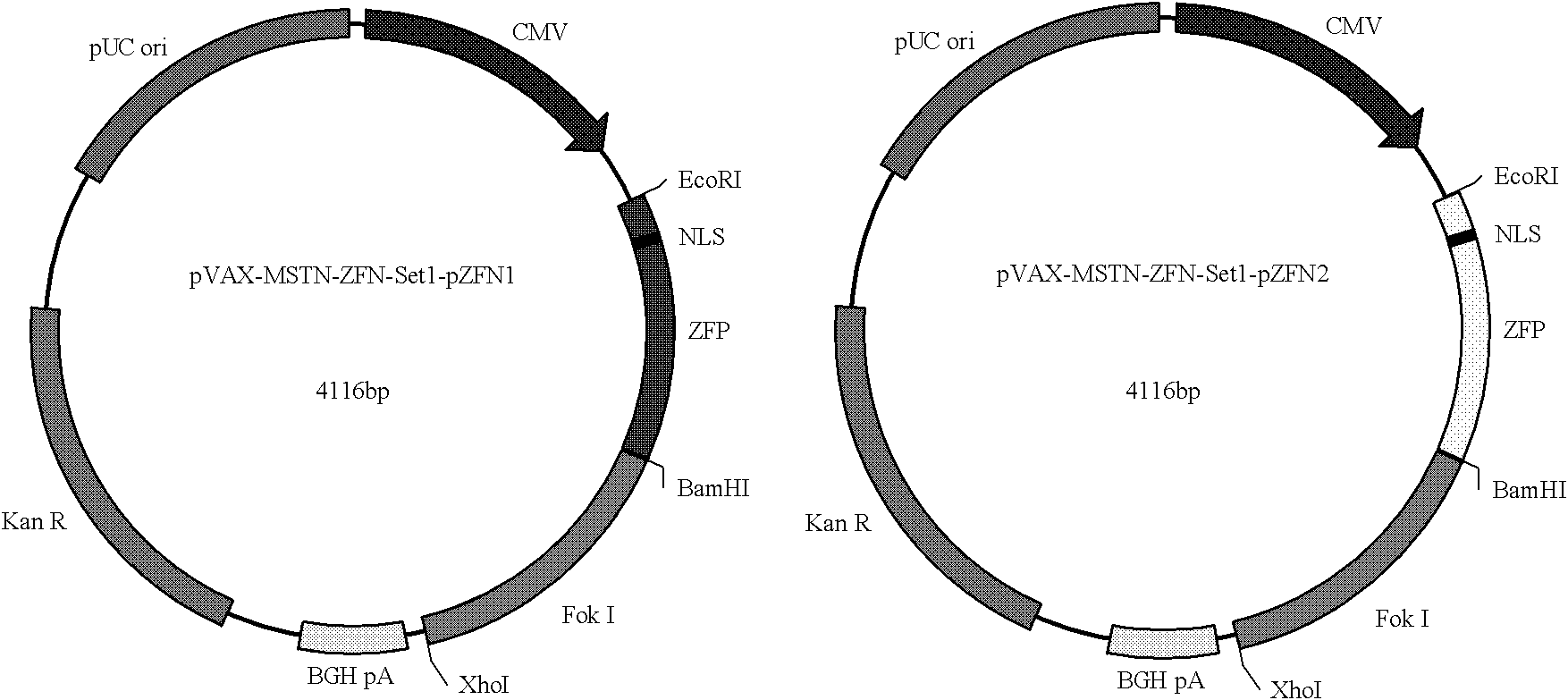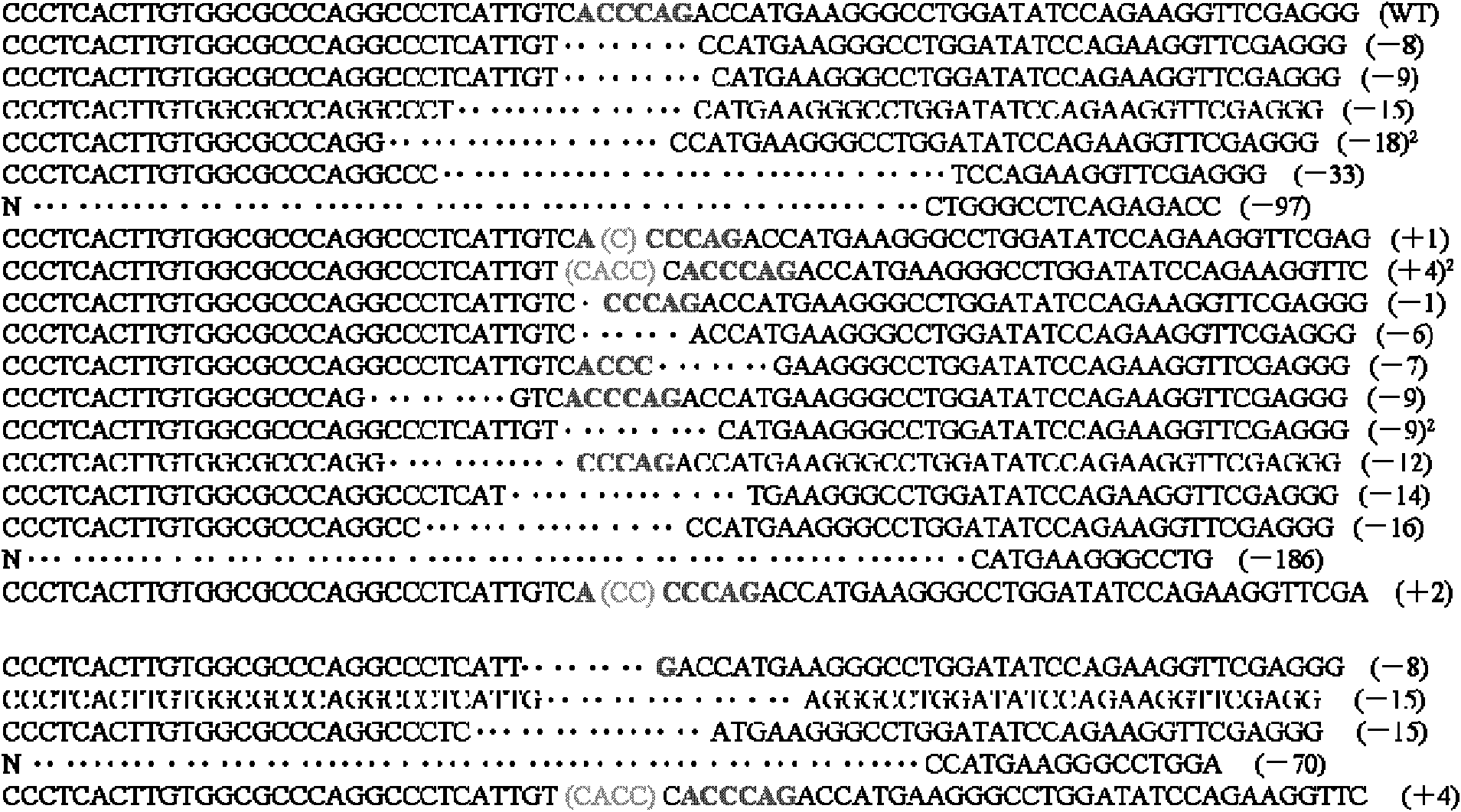Method for knocking out bovine myostatin gene by using zinc finger nuclease
A myostatin and zinc finger nuclease technology, applied in the field of genetic engineering, can solve the problems of inability to obtain positive single-cell clones, long cycle and high risk, simplify the biosafety evaluation process, save the drug screening process, and avoid confrontation. The effects of drug poisoning
- Summary
- Abstract
- Description
- Claims
- Application Information
AI Technical Summary
Problems solved by technology
Method used
Image
Examples
Embodiment 1Z
[0031] Screening and knockout efficiency of embodiment 1 ZFN expression vector
[0032] 1. ZFN expression vector construction
[0033] MSTN (NC 007300.4) gene sequence information was obtained from the NCBI website, ZFNs design was completed by Sigma Company, and the designed ZFNs sites were located on exons 1 and 3. MSTN-ZFNs-Set 1 acts on the first exon, and MSTN-ZFNs-Set 2 and MSTN-ZFNs-Set 3 act on the third exon. The DNA sequences they act on are:
[0034] ZFNs-Set1: GTCATTACCATGCCCACGG AGTGTG AGTAGTCCTGCTGGT ;
[0035] ZFNs-Set 2: CTCATCAAACCCATGA AAGACGG TACAAGGTATACTGG ;
[0036] ZFNs-Set 3: TTCCCAGAAC CAGGA GAAGATGGACTGGTA
[0037] The underlined parts are zinc finger protein binding sequences, and the middle part is the FokI endonuclease cleavage site. The corresponding three ZFNs expression vectors are: MSTN-ZFN-Set1-pZFN1 / pZFN2, MSTN-ZFN-Set2-pZFN1 / pZFN2 and MSTN-ZFN-Set3-pZFN1 / pZFN2.
[0038] ZFN expression vector construction process: Taking MST...
Embodiment 2
[0045] Example 2 Obtaining of Single Cell Clones and Identification of Gene Knockout Clones
[0046] 1. Obtaining of single cell clones
[0047] Using the AMAXA electroporation instrument to electrotransfer bovine fibroblasts, using optimized electrotransfer parameters T-016, the gene transfection efficiency can reach more than 90%. The transfected genetic material is mRNA, and the half-life in the cell is about 8 hours. There will be no random insertion into the cell genome when the DNA is transfected, which has a good guarantee for the genetic stability of the animal. At the same time, there will be no random integration of resistance genes, which meets the requirements of biological safety.
[0048] Specific operation method: Recover and purify the in vitro transcribed mRNA with a kit from Applied Biosystems, elute and dissolve with DEPC water, and make the final concentration about 500 ng / μl. The mRNA corresponding to a pair of ZFNs is 2 μg each, the total mRNA amount is...
Embodiment 3
[0052] Example 3 Preparation of embryos of gene knockout single-cell clones and cloned cattle
[0053] 1. Preparation of knockout cattle
[0054] The specific process includes:
[0055] (1) Holstein cow fetal fibroblast culture
[0056] Fetal ear tissues of 40-day-old Holstein cows were taken, and the bovine fetal fibroblast cell line was established through primary culture, subculture, freezing and other in vitro culture operations.
[0057] (2) Gene knockout single cell clone
[0058] The acquisition of gene knockout single cell clones is the same as in Example 2.
[0059] (3) Transgenic cloned embryo preparation and embryo transfer
[0060]Collect the ovaries of adult cattle from the slaughterhouse, take follicles with a diameter of 2-8 mm, and recover the cumulus-oocyte-complex with uniform shape and compact structure, and divide the cumulus-oocyte-complex into 50-60 pieces Put each hole into a four-well plate containing maturation solution (M199+10% fetal bovine seru...
PUM
 Login to View More
Login to View More Abstract
Description
Claims
Application Information
 Login to View More
Login to View More - R&D
- Intellectual Property
- Life Sciences
- Materials
- Tech Scout
- Unparalleled Data Quality
- Higher Quality Content
- 60% Fewer Hallucinations
Browse by: Latest US Patents, China's latest patents, Technical Efficacy Thesaurus, Application Domain, Technology Topic, Popular Technical Reports.
© 2025 PatSnap. All rights reserved.Legal|Privacy policy|Modern Slavery Act Transparency Statement|Sitemap|About US| Contact US: help@patsnap.com



